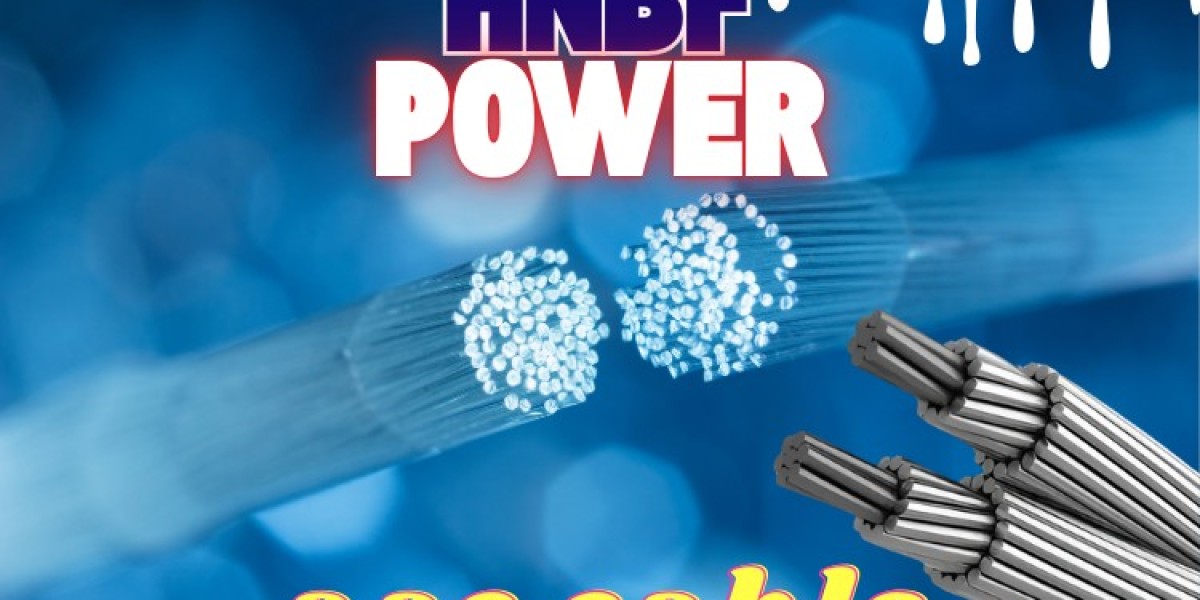AAC cable, or All Aluminum Conductor cable, is a widely used type of overhead electrical conductor known for its lightweight structure and high conductivity. Designed primarily for power transmission and distribution, AAC cables are an essential component in modern electrical networks. HNBFpower provides top-quality AAC cables that ensure reliability, efficiency, and safety in various applications.
Structure and Composition
AAC cables are made entirely of high-purity aluminum strands twisted together to form a conductor. Unlike other types of overhead cables that may include steel cores (like ACSR), AAC cables are lightweight and flexible, making them easier to handle and install. The uniform aluminum composition ensures excellent conductivity, which helps reduce energy losses during transmission.
Key Characteristics of AAC Cable
High Conductivity: Pure aluminum strands provide low electrical resistance.
Lightweight: Easier transportation and installation compared to steel-reinforced cables.
Corrosion Resistance: Aluminum naturally forms a protective oxide layer, reducing maintenance costs.
Flexibility: Ideal for long spans and locations requiring easy bending and shaping.
Advantages of Using AAC Cables
Cost-Effective: Aluminum is less expensive than copper, providing an economical solution for large-scale transmission.
Durable: With proper installation, AAC cables offer long-term performance under various environmental conditions.
Efficient Transmission: Excellent conductivity ensures minimal energy loss, contributing to overall system efficiency.
Eco-Friendly: Aluminum is recyclable, making AAC cables a sustainable choice for infrastructure projects.
Common Applications
AAC cables are versatile and suitable for multiple applications, including:
Urban and rural overhead power distribution networks.
Residential and commercial electrical installations.
Secondary power lines in substations.
Industrial projects requiring reliable overhead power transmission.
How to Choose the Right AAC Cable
Selecting the correct AAC cable depends on several factors:
Current Rating: Ensure the cable can handle the expected electrical load.
Span Length: Consider the distance between support poles to prevent excessive sagging.
Environmental Conditions: Choose corrosion-resistant grades if exposed to coastal or industrial areas.
Compliance Standards: Verify that cables meet industry standards for safety and performance.
Installation and Maintenance Tips
Always follow proper tensioning and sag calculations during installation to prevent mechanical stress.
Periodically inspect the cable for signs of wear, oxidation, or physical damage.
Use compatible clamps and hardware to maintain electrical continuity and structural integrity.
Why Choose HNBFpower for AAC Cables
HNBFpower is a trusted name in the electrical industry, offering premium AAC cables that combine performance, safety, and affordability. With professional guidance on selection, installation support, and high-quality manufacturing standards, HNBFpower ensures your projects meet efficiency and reliability goals.
Conclusion
AAC cables are a practical, cost-effective, and sustainable solution for overhead power transmission and distribution. By choosing high-quality AAC cables from HNBFpower, businesses and utility providers can ensure efficient, safe, and long-lasting electrical networks.
AAC cable, or All Aluminum Conductor cable, is a widely used type of overhead electrical conductor known for its lightweight structure and high conductivity. Designed primarily for power transmission and distribution, AAC cables are an essential component in modern electrical networks. HNBFpower provides top-quality AAC cables that ensure reliability, efficiency, and safety in various applications.
Structure and Composition
AAC cables are made entirely of high-purity aluminum strands twisted together to form a conductor. Unlike other types of overhead cables that may include steel cores (like ACSR), AAC cables are lightweight and flexible, making them easier to handle and install. The uniform aluminum composition ensures excellent conductivity, which helps reduce energy losses during transmission.
Key Characteristics of AAC Cable
High Conductivity: Pure aluminum strands provide low electrical resistance.
Lightweight: Easier transportation and installation compared to steel-reinforced cables.
Corrosion Resistance: Aluminum naturally forms a protective oxide layer, reducing maintenance costs.
Flexibility: Ideal for long spans and locations requiring easy bending and shaping.
Advantages of Using AAC Cables
Cost-Effective: Aluminum is less expensive than copper, providing an economical solution for large-scale transmission.
Durable: With proper installation, AAC cables offer long-term performance under various environmental conditions.
Efficient Transmission: Excellent conductivity ensures minimal energy loss, contributing to overall system efficiency.
Eco-Friendly: Aluminum is recyclable, making AAC cables a sustainable choice for infrastructure projects.
Common Applications
AAC cables are versatile and suitable for multiple applications, including:
Urban and rural overhead power distribution networks.
Residential and commercial electrical installations.
Secondary power lines in substations.
Industrial projects requiring reliable overhead power transmission.
How to Choose the Right AAC Cable
Selecting the correct AAC cable depends on several factors:
Current Rating: Ensure the cable can handle the expected electrical load.
Span Length: Consider the distance between support poles to prevent excessive sagging.
Environmental Conditions: Choose corrosion-resistant grades if exposed to coastal or industrial areas.
Compliance Standards: Verify that cables meet industry standards for safety and performance.
Installation and Maintenance Tips
Always follow proper tensioning and sag calculations during installation to prevent mechanical stress.
Periodically inspect the cable for signs of wear, oxidation, or physical damage.
Use compatible clamps and hardware to maintain electrical continuity and structural integrity.
Why Choose HNBFpower for AAC Cables
HNBFpower is a trusted name in the electrical industry, offering premium AAC cables that combine performance, safety, and affordability. With professional guidance on selection, installation support, and high-quality manufacturing standards, HNBFpower ensures your projects meet efficiency and reliability goals.
Conclusion
AAC cables are a practical, cost-effective, and sustainable solution for overhead power transmission and distribution. By choosing high-quality AAC cables from HNBFpower, businesses and utility providers can ensure efficient, safe, and long-lasting electrical networks.








